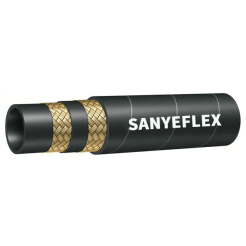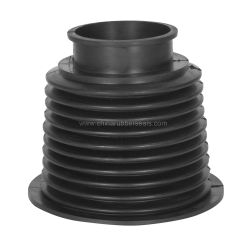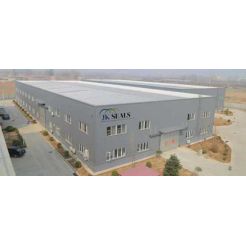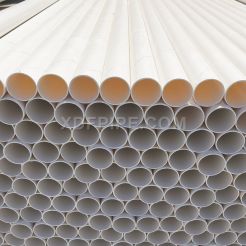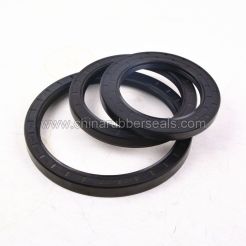hydraulic rubber hose manufacturer
Product Description
https://www.chinarubberseals.com/hydraulic-rubber-hose.html
Hydraulic rubber hoses are used in high-pressure hydraulic systems for control and power supply. They are designed for the main transmission of hydraulic fluids (hydraulic fluids according to ISO 6743-4, except HFD R, HFD S and HFD T fire resistant fluids). For other applications (e.g. compressed gases), always contact Sanshi Rubber's technical department. For water, water-based liquids and air, the maximum working temperature is +70°C. For air over 17 bar, the hose cover should have pinholes and be additionally protected.
Hydraulic rubber hoses are manufactured in imperial sizes with standardized inner diameters. The most popular standards for setting hose requirements are: European standard - EN, International ISO and American SAE. symbols of the standards and the most important data (diameter, working pressure and date of manufacture) are marked on the hose. In addition, the hose may bear a specific name assigned by the manufacturer or the customer.
Characteristics of hydraulic rubber hoses
Greater flexibility
Minimum bend radius is smaller than standard hydraulic hose.
Higher pressure parameters
Hydraulic hoses with a maximum working pressure higher than standard requirements. This expands the application range of the hose while maintaining a safety factor and the same hose diameter, so there is no need to change it (e.g., make it smaller) or change its type (e.g., from a double braided hose to a spiral hose).
Higher temperature parameters
Hydraulic hoses have specific operating temperature ranges. For hoses with textile braid (2TE, 3TE types), with compact steel wire braid (1SC, 2SC, 1SN, 2SN) the range is -40°C to +100°C (peak up to 125°C ), and suitable for a certain set of hoses with spiral braid (4SP, 4SH). For spiral hydraulic hoses with constant operating pressure, regardless of diameter (R12, R13, R15), the range is -40°C to +121°C (peak up to 125°C). Sometimes hydraulic systems may operate at temperatures higher than standard hydraulic hoses. If the recommended temperature is exceeded, the rubber begins to lose its elasticity and hardens, and then begins to leak at the end of the hose near the fitting. In this case, a hose with a higher operating temperature range should be used.
Greater wear resistance
Rubber hydraulic hose outer layers manufactured to prevailing standards have limited wear resistance. Abrasion resistance tests are carried out according to the EN ISO 6945 standard. It defines the weight loss of a hose sample after a specific number of cycles and a vertically applied force (for example, the average weight loss for hose types 1SN and 2SN after 2000 cycles of testing at a vertical force (25±0.5 N) is 0.5 g. In order to increase the wear resistance of the outer layer, manufacturers will add an additional layer (such as UHMWPE ultra-high molecular weight PE - cross-linked polyethylene), and then there is no need to add another layer of protective sheath (such as hose protection spiral) .
Longer service life
The service life of hydraulic hoses is affected by many external and internal factors. Assuming that a specific hose is chosen correctly in terms of operating parameters (pressure, temperature, media, etc.), the question arises of how long the hose will last. At this stage of hose selection we can only rely on additional information provided by the hose manufacturer. In this case, such information could be data from strength tests (e.g. pulsating pressure). Pulsation pressure resistance is defined as the number of cycles of pressure pulses a hose should withstand when tested according to the procedure specified in ISO 6803.


